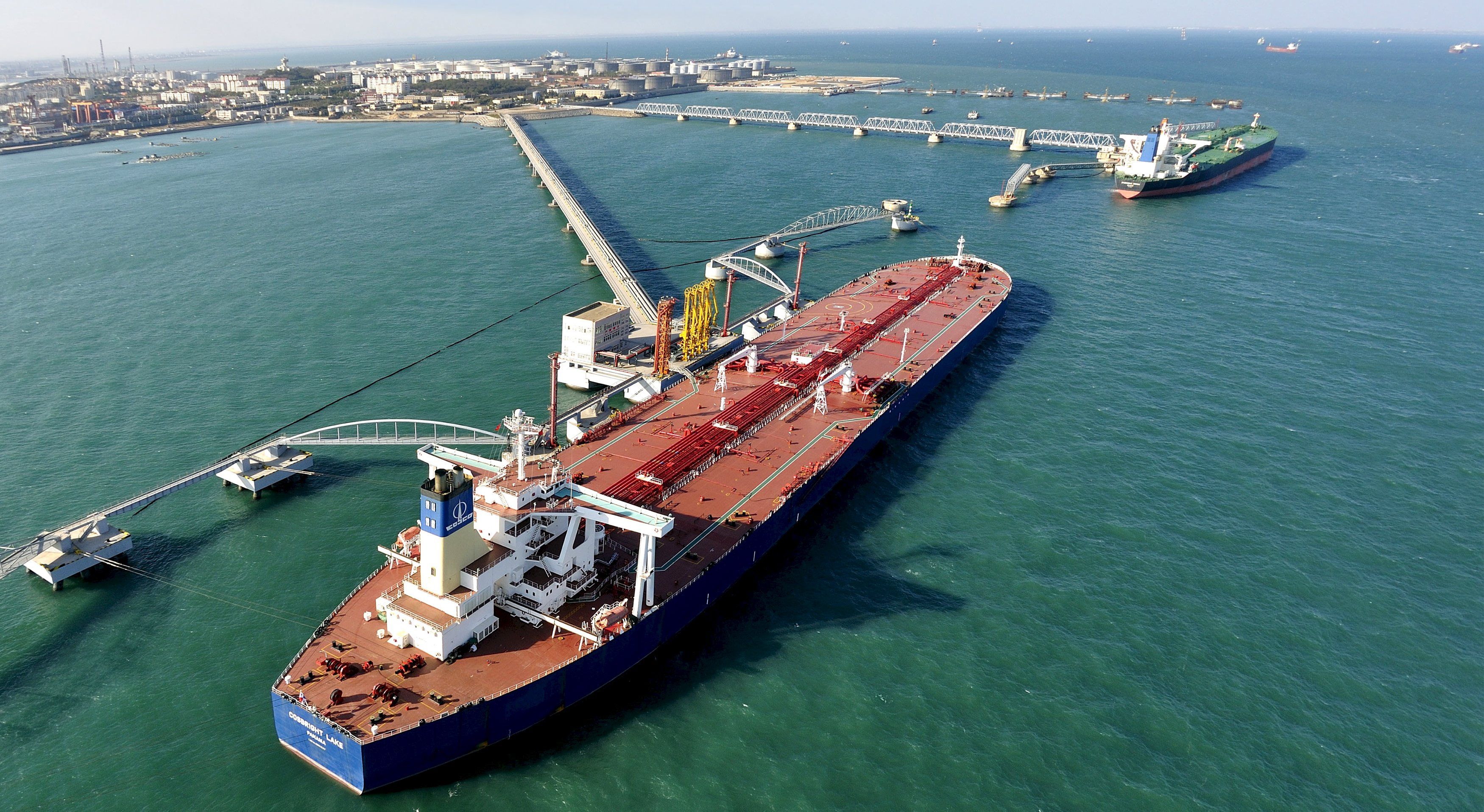U.S. President Donald Trump’s withdrawal of the United States from the 2015 nuclear deal will not affect Iran’s natural gas exports, according to Iran’s deputy oil minister.
“Iran’s gas industry will not face any restrictions following the US withdrawal from the nuclear deal,” Hamid Reza Araqi, who is also Managing Director of the National Iranian Gas Company (NIGC), said on May 27.
"We manufacture between 80% and 90% of the equipment used for maintaining and establishing refineries inside the country and are self-sufficient in this regard," Tasnim News Agency cited Araqi as saying.
On May 8, Trump announced that the U.S. would exit from the Joint Comprehensive Plan of Action (JCPOA), better known as the nuclear deal, which provided for the gradual lifting of multilateral nuclear-related sanctions placed on Iran, in exchange for Tehran curbing its nuclear program.
The European Union, Iran, Russia, China, France, the United Kingdom and Germany all have criticized Trump’s decision to unilaterally pull out of the deal and have launched talks in recent weeks to save what is a multilateral agreement.
Iran's total natural gas exports, including gas swaps through pipelines extending into neighboring countries, such as Iraq, Turkey, Armenia and the Azerbaijani exclave of Nakhchivan, is estimated to be nearly 50 million cubic meters (mcm) per day.
According to Behzad Babazadeh, the director of international affairs at the National Iranian Gas Company, Iran's natural gas exports grew by 60 percent during the last Iranian year, which runs from March 21, 2017 – March 20, 2018, compared with the preceding year. Exports reached 13.8 billion cubic meters (bcm), according to data cited by SHANA, the National Iranian Oil Company's news agency.
Babazadeh said that Iran is expected to make up roughly 10 percent of the global gas export market by 2025.
Iran's gas production is 850 mcm per day and is expected to rise to 1.2 bcm a day by the end of the country's Sixth Development Plan, in March 2021. Officials hope to boost exports to 200 mcm per day.
Turkey is Iran's biggest buyer of gas, importing 30 mcm daily, followed by Iraq, which buys 18 mcm. Iran plans to increase exports to the neighboring Arab country by supplying natural gas to the housing, commercial and industrial sectors. Gas exports to Iraq's second largest city, Basra, are expected in the near future.
In July 2017, the French multinational energy company Total, the state-owned oil-gas corporation China National Petroleum Corporation, and the National Iranian Oil Company signed a $4.8 billion deal to develop the South Pars offshore gas field in the Persian Gulf. Shared between Persian Gulf neighbors Iran and Qatar, the field is the world’s largest, holding an estimated 51 trillion cubic meters of in-situ natural gas and 50 billion barrels of natural gas condensate.
On May 27, the Managing Director of the Pars Special Economic Energy Zone Customs division, Mr. Ahmad Pour Heidar, told the Islamic Republic News Agency (IRNA) that gas condensate exports from the South Pars gas field saw a 149 percent growth during the Iranian calendar month of Ordibehesht (April 21-May 21) compared to the same period past year.
According to the BP Statistical Review of World Energy for 2017, Iran’s total proved natural gas reserves are estimated at 33.5 trillion cubic meters.
Officials in Tehran hope to turn Iran into a gas exporting hub, and they have already agreed with some of Iran’s neighboring countries to export natural gas via planned regional pipelines. However, Iran’s domestic growth for energy resources, international sanctions that have prevented access to technology and foreign investment, and disagreements between Iran and potential buyers over natural gas prices have complicated matters.
In 2014, Iran and Oman agreed to form a joint venture that would deliver more than 28 mcm per day of Iranian gas to the neighboring Gulf country. However, Oman’s development of its domestic natural gas resources removed some of its need for imports. Meanwhile, Iran's Minister of Petroleum Bijan Zangeneh and Omani Minister of Oil and Gas Mohammed Al Rumhy recently agreed to finalize two supplementary documents to the gas contract the two countries have already signed, according to SHANA.
Iran has already completed the construction of its segment of the Iran–Pakistan gas pipeline, called the Peace Pipeline, which runs 900 kilometers (559 miles). Meanwhile, Pakistan has fallen short of constructing its 700 km (435 mi) segment.
Iran has repeatedly warned Pakistan about not completing the project, and the disputes between the two countries seem to become more intense in recent years to an extent that Iran is considering taking legal action against its eastern neighbor or cancel the $7 billion project altogether.
Iran’s natural gas pipeline system is connected to that of the United Arab Emirates (UAE). However Tehran has refused to sell gas to the UAE over market fluctuations and price disputes.
In 2001, the National Iranian Oil Company and the UAE’s Dana Gas’ affiliate Crescent Petroleum signed a 25 year contract for Iran to deliver gas to the UAE with the price linked to oil. But deliveries were suspended as global oil prices rose and some officials and politicians in Iran called for a revision to the gas pricing formula.
After repeated cancellations, the contract has been referred for international arbitration, which is still in process, according to Reuters.
“Almost half of the natural gas reserves of the country are located across its common borders with neighbors,” Iranian expert Farhad Daneshvar told Caspian News. “In order to hit the goal of boosting gas exports, the Islamic Republic needs to lure huge amounts of foreign investment, which has been undermined by the recent U.S. decision on imposing new sanctions.”
“Iran needs to put at least $15 billion in investment to fully make the mega project operational within the next two years,” Daneshvar explained.
“Iran, in order to hit the international gas markets, needs to develop liquified natural gas (LNG) facilities. But the recent political developments appear to dash hopes for luring investment in this sector.”







 The Foreign Ministry of Azerbaijan has rejected a claim by French Interior Minister Gérard Darmanin on Baku’s alleged meddling in New Caledonia’s p...
The Foreign Ministry of Azerbaijan has rejected a claim by French Interior Minister Gérard Darmanin on Baku’s alleged meddling in New Caledonia’s p...
 Azerbaijan Railways (ADY) has successfully completed the reconstruction of the cargo yard located in the Astara region of Azerbaijan to ensure the ...
Azerbaijan Railways (ADY) has successfully completed the reconstruction of the cargo yard located in the Astara region of Azerbaijan to ensure the ...
 Colonel Anar Eyvazov, spokesperson for the Azerbaijani Ministry of Defense, has disclosed significant developments concerning the early withdrawal ...
Colonel Anar Eyvazov, spokesperson for the Azerbaijani Ministry of Defense, has disclosed significant developments concerning the early withdrawal ...
 Russia is moving forward with what it calls a “special military operation” in Ukraine with its forces advancing in the Kharkiv region.
Russia is moving forward with what it calls a “special military operation” in Ukraine with its forces advancing in the Kharkiv region.



